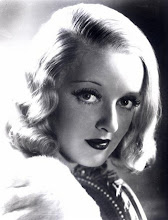Now that National Novel-Writing Month is over, I'm hopefully going to be focusing on this blog a lot more. To celebrate my sixth victorious year in a row, I'm going to do something a bit different -- like discussing a movie that was filmed during my own lifetime. Quelle horreur!
The movie in question is actually a French trilogy from the 1990's, which I had the opportunity to watch over the last three Tuesdays in November thanks to Rowan's International Center. Directed by Kryzystof Kieślowski, each film in Trois Couleurs ("Three Colors") represents a color of the French flag and an ideal of the French revolution -- Bleu for liberté, Blanc/Bialy for égalité, and Rouge for fraternité. Each movie's IMDb page bills the films as a trilogy about French society, but I found them to be more portraits of individuals who could conceivably represent anyone from anywhere under the right (or horribly wrong) circumstances.
Bleu, the first film and my favorite of the three, is about a woman who essentially attempts to stop living after losing her husband and daughter in a car crash. Life, however, finds her anyway as she is drawn into forging new connections with her late husband's colleague, her new neighbor, and even her husband's mistress. It's followed by Blanc, which tells the story of a man who returns to his native Poland after his wife humiliates and divorces him due to his impotence. He establishes a friendship with a suicidal family man, and carries out an elaborate scheme of revenge against his ex-wife. The final film, Rouge, details the unlikely connection between a model and a reclusive retired judge, whom she discovers eavesdropping on his neighbors.
The trilogy is in French, except for Blanc which is largely in Polish, but much of the story is told through actions, emotions, and visual symbols rather than words. Each movie's title color figures heavily into the composition of each scene. These movies would not fall into the category of light entertainment; they are frenzied and thought-provoking, with abrupt endings that require a minute or two to digest. The subtle ways in which the three films are connected suggest something about the universality of life, even as each character seems completely isolated. The films function both on their own and as a whole; if you have the chance to see one or all of them, don't pass it up.
Subscribe to:
Post Comments (Atom)



No comments:
Post a Comment